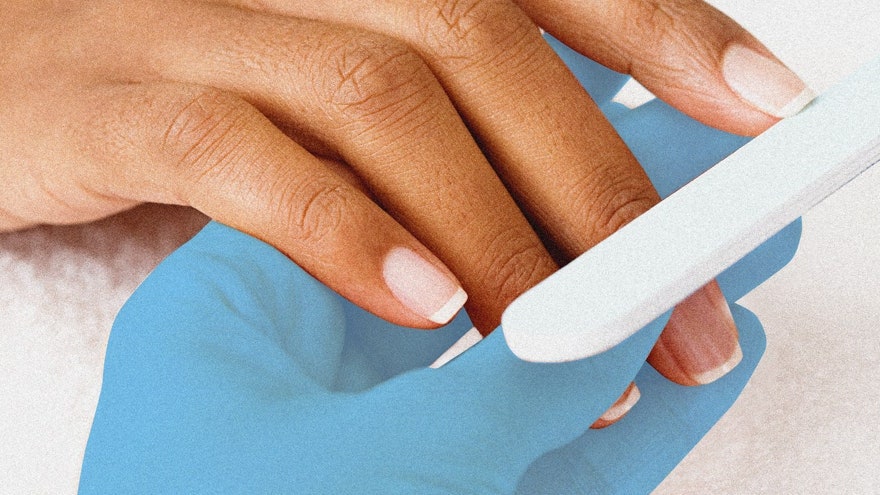Sundays Studio reopened on July 6th with a breadth of new safety and sanitation procedures. “We were inspired by learning from others, including salons that reopened in Asian countries, or different parts of the country earlier than in New York,” explains founder Amy Ling Lin. In addition to many of the practices first introduced at hair salons—including wearing masks, temperature checks, sanitizer stations, and contactless payment—Lin has reduced salon capacity by half, put up glass partitions around each manicure station to prevent close contact, and added chairs outside for the option of al-fresco drying. In addition to nail specialists wearing masks and gloves, they have new uniforms that can only be worn within the studios. It was also important to Lin to build in a lot of breaks into her nail specialist’s daily schedule. “There are still uncertainties ahead of us, but no matter what happens, I think we have the ability to overcome that,” says Lin. “Take wearing masks all day at work for example, it is not the most comfortable thing but if health care workers can do that, we are strong enough and flexible enough to do the same.”
Facial Treatments
As a global brand, Dermalogica, which trains over 100,000 licensed skin-care professionals each year and has over 20,000 independent salons and spas worldwide, utilized its vast resources to act fast in creating a reopening plan for its locations across the U.S. In May, the brand launched an official guide, 12 Principles for Enhanced Service Safety, detailing safety protocols, as well as a Clean Touch Certification allowing skin therapists to complete online training on key principles and practices. Designed for all of its locations to follow diligently, it was the brand’s Atlanta flagship that put it to the test first with measures that included wearing masks in common areas, layering a face shield over masks during treatments, and staggering appointments to maintain physical distancing. Clients were happy to adapt: “Customers were eager to get back in for treatments, whether they needed to address a specific skin issues, such as irritation from wearing masks, or they have simply missed their monthly treatments and are eager to get back to ‘normal,'” explains Heather Hickman, Dermalogica’s senior direction of U.S. education.
While many spas have begun reopening in many cities, Kate Somerville is taking her time with her New York and Los Angeles clinics, which offer custom facials, laser treatments, and injectables. “We have developed a comprehensive safety protocol for our facility and equipment updates, staff training, and new guidelines for our clients,” explains Somerville, adding that she’s been particularly inspired by South Korea, a country that has always been innovative in beauty and is further along in their reopening process. “While our clinic has always provided surgical levels of cleanliness, there will be more focus on spacing out clients and staff to ensure we have adequate resources to deep disinfect at all touch points,” Somerville says. As the staff keeps up with clients via the brand’s virtual in-home skin consultations, Somerville says many are eager to treat sensitized skin and stress-related break-outs, as well as touch-up or try injectables. “There’s a lot of interest from new clients who have been staring at their face on Zoom meetings all day!” says Somerville.
Massages and Body Treatments
In early May, Atlanta’s Respire Massage & Spa reopened, putting forth a full protocol in compliance with the CDC guidelines that includes a COVID-19 intake questionnaire, PPE requirements for staff and customers, and intense sanitation. “Instead of scheduling clients 15 minutes apart, we schedule them 30 minutes apart so that we have enough time for deep sanitization and drying time, giving clients time to leave before other clients come in,” explains Young. For massage treatments, which have been one of their most in-demand services, clients keep their masks on and practitioners follow proper handwashing and hygiene protocols, as well as equip tables with waterpoof coverings that keep the surface protected from moisture, grime, and body fluids. “Many of our clients suffer from pain and carry stress, so they’re looking to release and manage their chronic pain,” says Young, adding that less hands-on alternatives to massages, such as reiki and infrared sauna, have been popular as well.
